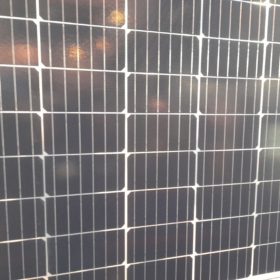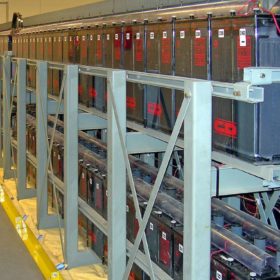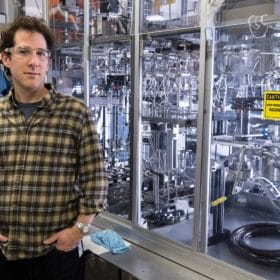Hydrogen batteries vs. lithium-ion batteries
Researchers in Australia have compared the technical and financial performances of a hydrogen battery storage system and a lithium-ion battery when coupled with rooftop PV. They evaluated two commercially available systems – LAVO and Tesla Powerwall 2 – and found that the lithium-ion battery provides better financial profits, whereas the hydrogen battery offers more battery lifespan for long duration of energy storage.
Weekend Read: Connecting HJT
The application of busbarless cell interconnection approaches could unlock the potential of heterojunction (HJT) technology, primarily by reducing the historically high silver usage of negatively-doped, “n-type” cell technology. As HJT manufacturing increases, a wave of applications may very well be on the horizon.
PERC inventor discusses the future of the technology
University of New South Wales academic Aihua Wang is the first female recipient of the United Kingdom’s Queen Elizabeth Prize (QEPrize) for Engineering, after sharing the 2023 award with Andrew Blakers, Martin Green, and her husband Jianhua Zhao for their work developing the passivated emitter rear contact (PERC) solar cell. pv magazine caught up with her to ask about the achievement.
Distributed PV, battery storage curtailment in low-voltage networks
University of New South Wales (UNSW) researchers have looked at energy losses in South Australia and have identified average curtailment of 1.5% for distributed PV sites and 0.2% for distributed PV coupled with batteries, but some locations experience generation losses of up to 25%.
Weekend Read: Flex generation
A new generation of flexible, lightweight modules is entering the market. With back contact technology offering its own form of design flexibility and robustness, the new products could crack a hard-to-address market segment.
Weekend Read: China’s solar century
From zero to hero in 20 years, China’s PV industry has undergone an extraordinary journey. Vincent Shaw considers the reasons for the nation’s solar success and the challenges ahead.
Australia funds ultra-low-cost PV future
The strength of applications for the Australian Renewable Energy Agency’s ultra-low-cost solar research funding round was so strong that the agency had to add AUD 1.5 million ($1.03 million) to its original allocation. The strength of competition pushed the process into 2023, but the 13 research projects aiming to achieve ultra-low-cost solar have now been awarded.
Assessment of hydrogen-induced contact resistance in TOPCon solar cells
Researchers have looked at how hydrogen-induced contact resistance could help to reduce changes in series resistance, in either TOPCon or PERC solar cells. They said degradation occurs purely at the n-type silicon-to-silver (Ag) contact on both cell architectures.
Reverse bias – a hidden challenge for perovskite solar cell stability
New research from renowned PV scientist Martin Green and colleagues at UNSW reveals that perovskite solar cells may struggle to deal with reverse-bias caused by uneven shading or other issues likely to appear in the field. Both the reverse-bias itself and resulting build up of heat can cause several of the materials commonly used in perovskite solar cells to degrade, and these issues have received only limited attention in research published to date. Solutions, however, are at hand.
New approach to III-V tandems sets 32.9% efficiency record
A collaboration between the U.S. National Renewable Energy Laboratory and Australia’s University of New South Wales has yielded a new efficiency record of 32.9% for a tandem cell device utilizing III-V materials. Key to the achievement was a new technique enabling the researchers to take advantage of “quantum wells” in the material that serve to trap charges and enable tuning of the cell bandgap to absorb more of the light spectrum.










